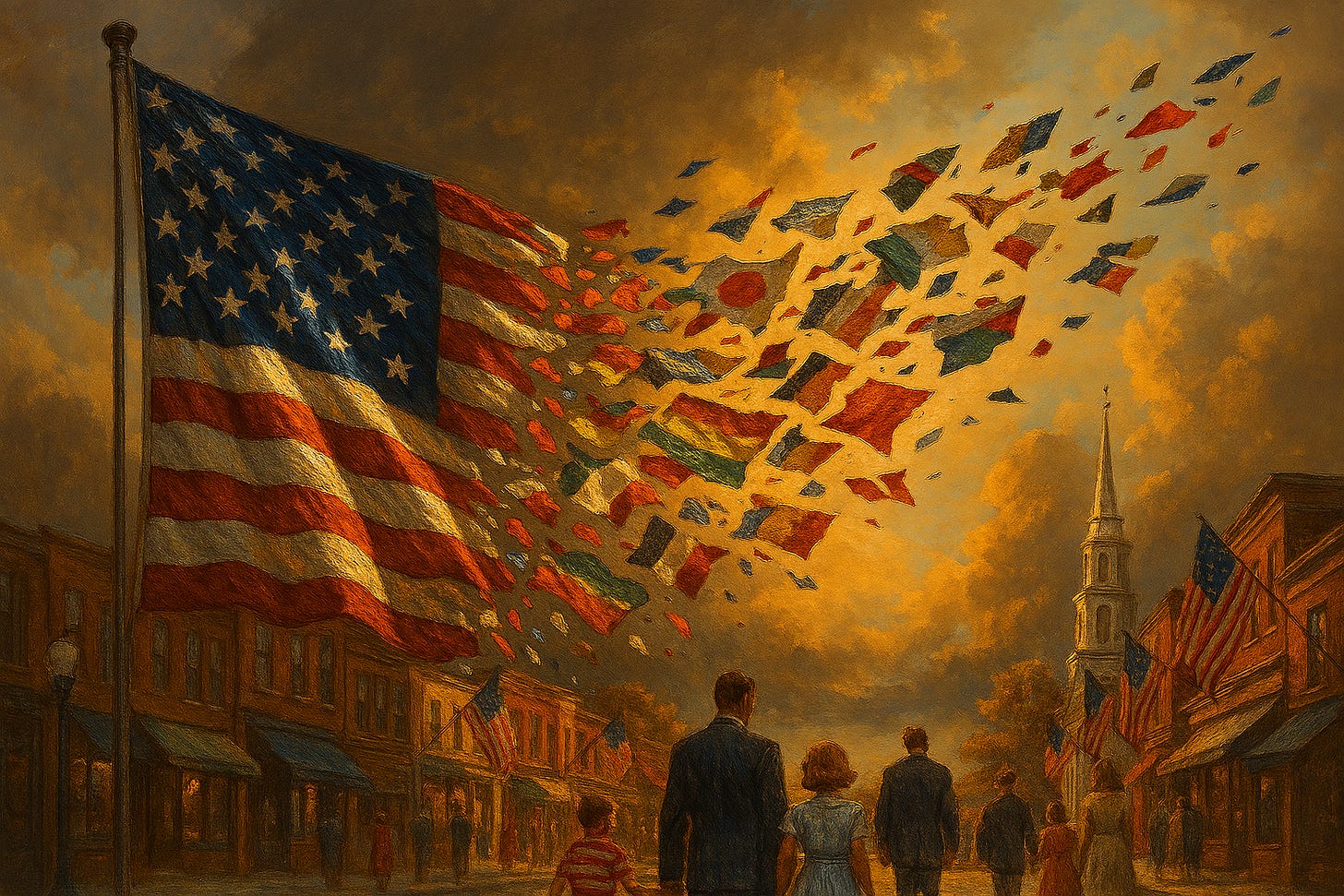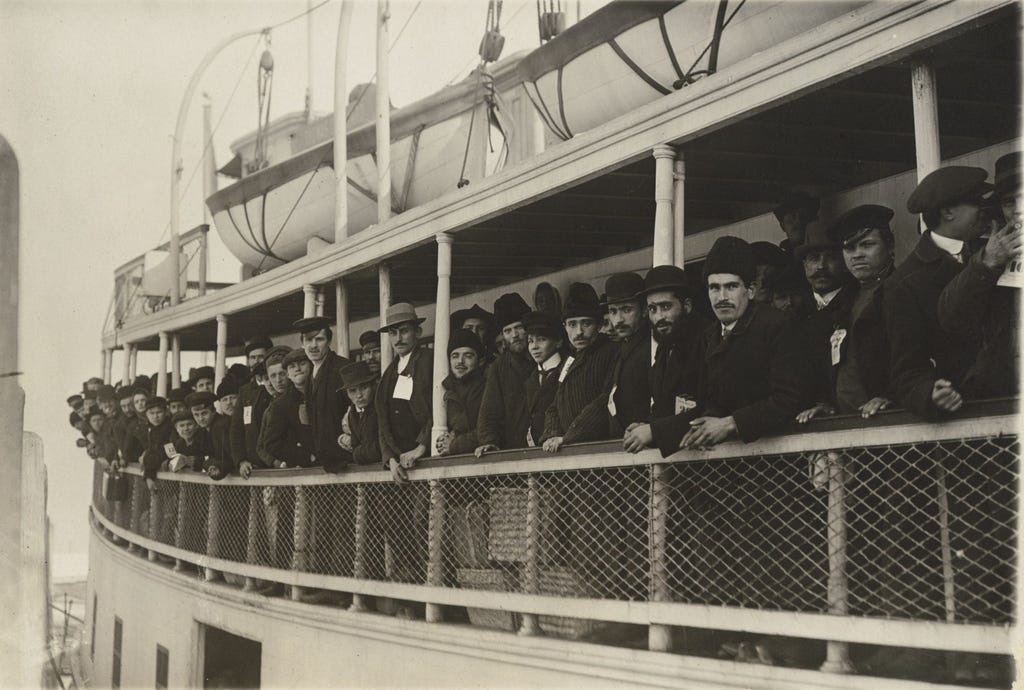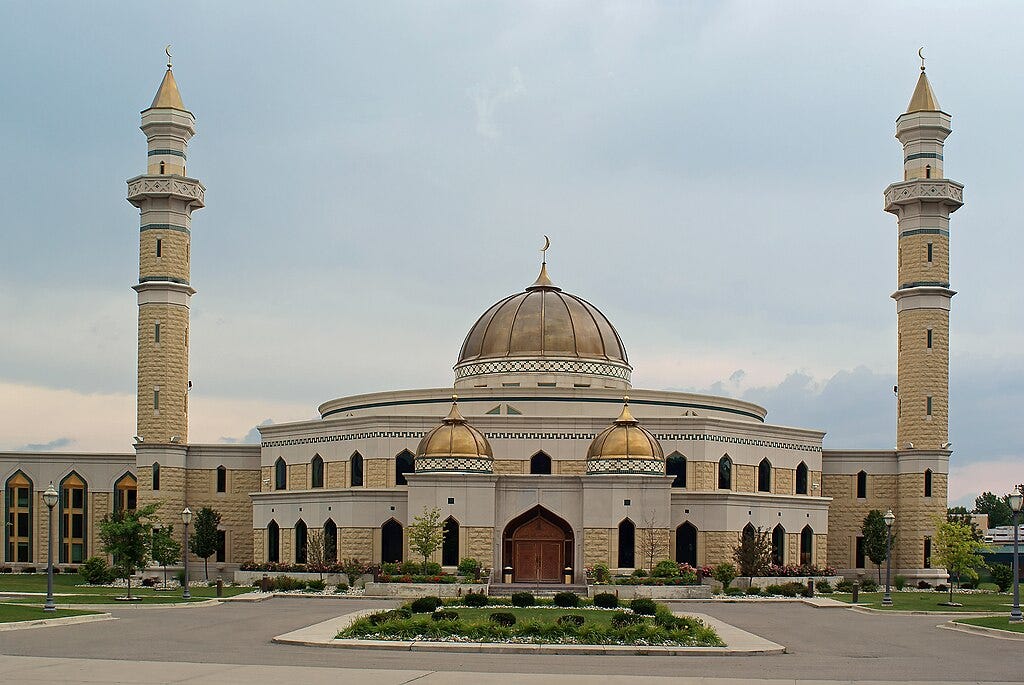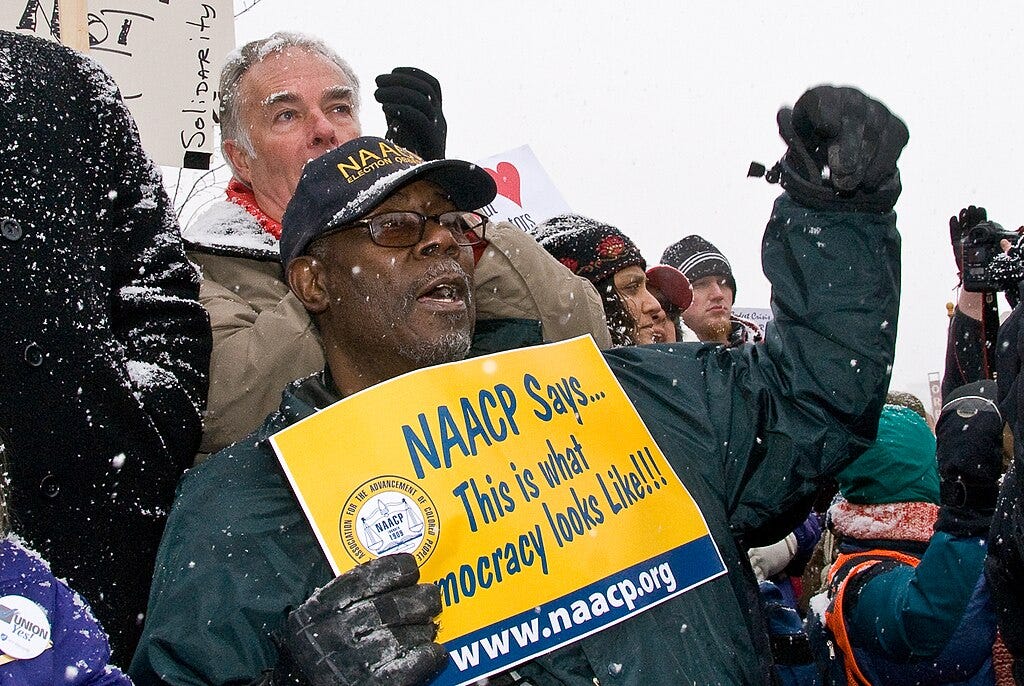We need to have a conversation that’s going to probably make some of you a little uncomfortable. Not because that’s my intention, but because we’ve been avoiding a fundamental question for so long that our inability to discuss it honestly has become a national crisis.
The question is this: Can non-white people assimilate into American culture?
To be perfectly honest - I don’t know the answer. And this uncertainty itself is important, because it reveals how deeply we’ve been trained to avoid even asking such a controversial question.
What Is Assimilation, Really?
Let’s start with the basics. Assimilation essentially means:
Speaking the native language (English)
Participating in the national culture
Understanding the founding documents
Observing the national holidays
Sharing the predominant religion (historically Christianity)
But assimilation also means something deeper than simply checking off boxes. It means seeing yourself as American. Not African-American, not Asian-American, not Hispanic-American with the hyphen doing heavy lifting—just American.
The 400-Year Test Case
Consider Black Americans. Many of them have been here for something like 400 years. They speak English as their only language. Many are even Christian. They’ve fought in every American war. And they’re relatively integrated into major cities and universities.
And yet…
They want their own national anthem. Their own flag. Their own Independence Day (Juneteenth). Their own founding fathers—replacing Washington and Jefferson with figures from an entirely oppositional historical framework. They take a knee for the flag. They sing the Stevie Wonder “Happy Birthday” instead of the traditional one. They maintain that America was built on slavery and white supremacy, making the founding itself illegitimate.
Now, I want to make it clear that by no means am I talking about all Black Americans—many are genuine patriots who love this country. But it’s a significant portion. Significant enough that we have to ask: After 400 years, if assimilation hasn’t happened, when will it?
They have their own colleges (HBCUs). Their own distinct culture that they explicitly call “Black culture”—not American culture with some ethnic flavor, but a separate thing entirely. When I describe my culture, I don’t say “white culture.” I say American culture. Because that’s what it is.
The European Melting Pot
Compare this to European immigrants. Many Germans have been in Pennsylvania for over 200 years. They’re as American as the English, Scots-Irish, or French. Same with the Poles, Italians, and Irish who came later.
Yes, they maintained some ethnic traditions. Yes, there are still Italian neighborhoods and Irish pubs and German festivals. But these are flavors within American culture, not alternatives to American culture. An Italian-American doesn’t feel the need to rewrite American history to center Italian oppression. The Irish don’t demand we replace the founding fathers with Irish heroes.
They joined the story. They didn’t try to write a competing one.
This is how peoples are actually formed. The Angles and Saxons became, well, the Anglo-Saxons. Various European groups came to America and became Americans—a new people with a shared identity built on a common civilizational foundation.
The Current Wave
Now look at recent immigration patterns.
Hispanics in Los Angeles: There are entire schools where not a single word of English is spoken. How is that American exactly? When a Hispanic person arrives in LA and finds miles of Spanish-speaking neighborhoods with their own food, culture, and media, how is assimilation even possible under these conditions?
Muslims in Dearborn and Minnesota: They form insular communities, practice customs completely foreign to American norms, and maintain primary loyalty to their religious identity over their national one.
Indians in Texas: Building massive Hindu temples and deities. Maintaining caste-based social networks. Speaking their own languages in ethnic enclaves.
These groups have fundamentally different alphabets, religions, philosophical traditions, and civilizational origins. They have nothing in common with the European foundation of American culture.
Why European Immigration Worked
People will object: “But Germans and Italians were considered different races too! They had conflicts! There was discrimination!”
True. But here’s what matters: They were all from the same civilizational root. Christianity. Greco-Roman philosophical heritage. European Enlightenment values. Indo-European languages. Similar concepts of law, property, individual rights.
An Italian Catholic and a German Lutheran had far more in common with each other—and with Anglo-American Protestants—than any of them have with a Hindu from India who worships a pantheon of gods, speaks a language with a different alphabet, comes from a caste-based society, and has zero historical connection to European civilization.
The “European soul” of America isn’t about genetics in some crude biological sense. It’s about civilization. Philosophy. Religion. Aesthetics. Institutional traditions. The entire framework of what makes America America is European in origin.
The Conditions for Assimilation
Let’s say, for argument’s sake, that non-white assimilation is theoretically possible. What would the conditions need to be in order to properly integrate these newcomers?
I’d say, at the very least, they’d need to be vastly outnumbered by heritage Americans who’ve been here for generations. Surrounded by the dominant culture with no ethnic enclaves to retreat into. Arriving slowly enough that the country can digest each wave before the next one comes.
In other words: perfect conditions.
But here’s the thing: we don’t have perfect conditions. We have basically the exact opposite. Massive numbers arriving simultaneously. Immediate ethnic enclaving. No pauses to allow integration. A country already so diverse that there’s no clear dominant culture to assimilate into.
This is how it used to work: Open the door for a period, let people in, then close the door and digest the newcomers. That’s what happened with Germans, Irish, Italians, and later Eastern Europeans. It worked because there were actual pauses. Because the numbers were manageable. And most notably, because the civilizational distance was bridgeable.
The Dishonesty of Our Current Discourse
Here’s what we’re not allowed to say: Some immigrants are objectively better than others.
I don’t necessarily mean “superior” in some absolute biological sense, but better for America. Better for maintaining national cohesion. Better for preserving a shared identity. Better for keeping the country functional and unified.
If the native population is one way, and all the newcomers are another way, and the newcomers refuse to adopt the ways of the natives, you get division. You get lack of cohesion. You get an alien presence that grows larger while heritage America shrinks.
Immigration should benefit Americans. It shouldn’t replace them, substitute them, attack them, or form a counter-identity in opposition to them. This is true whether we’re talking about illiterate peasants from dysfunctional countries or high-IQ specialists from advanced ones.
The Group Interest Question
We’re told we must treat everyone as individuals. That we can’t construct policy around group based membership. That race-based thinking is inherently evil.
And yet, we live in a society filled with explicitly group-based organizations: the NAACP, ADL, SPLC, La Raza, and countless others advocating for specific ethnic interests. We have group-based preferences in hiring and education. Group-based grievances practically dominate our political discourse.
So why is immigration policy the one area where we must pretend groups don’t exist?
If other groups can organize by ethnicity and advocate for their interests, why can’t European-Americans do the same? Why is it legitimate for every group except the founding population to consider their group interests?
A Thought Experiment
Imagine you randomly select an atheist Swede and a Christian Nigerian and you drop them both in America. Which one is more likely to assimilate successfully?
Any honest person would say the Swede.
Why? They share more cultural reference points. They integrate into social networks more easily. They have compatible values around individualism, time preference, social trust, and governance. They don’t stand out as permanently “other.” They come from a society with similar institutional structures.
Even though the Nigerian is Christian and the Swede is atheist, there are other cultural factors at play—factors, of course, we’re not supposed to acknowledge.
What Binds People Together?
The “proposition nation” theory says America is unique—that we’re bound together not by blood or heritage but by shared belief in certain principles. Liberty. Equality. Individual rights.
But is this real? Is there anything tangible about a “proposition” that creates genuine cohesion the way shared ancestry or religion does?
The evidence seems minimal. We’re living through the test case right now, and American society is fragmenting along exactly the lines you’d predict if shared ancestry actually matters and shared propositions don’t.
The Core Truth
American culture is essentially European. The philosophy is European. The religion is European. The legal traditions are European. The aesthetics are European. The entire civilizational character is European.
Groups that are closer to that origin—other Europeans—can join relatively seamlessly. Groups further away face increasing difficulty. East Asians are probably the next most compatible: they’re intelligent, hard-working, low-crime, and don’t generally form oppositional identities. But even they come from a world so foreign to the European soul that there’s nothing essentially Asian about American culture. And they remain relatively small in numbers.
When you move further away—to groups with completely different religions, languages, philosophical traditions, and civilizational origins—the gap becomes unbridgeable at scale.
The Question We Can’t Avoid
This all leads back to the original question: Can non-white people assimilate into American culture?
Maybe some can, as individuals, under perfect conditions, in small numbers.
But as a matter of policy—when we’re talking about mass immigration, ethnic enclaving, and rapid demographic change—the evidence suggests the answer is no.
And if that’s true, then our current race-neutral immigration policy isn’t just misguided. It’s civilizational suicide.
We can have an honest conversation about this, or we can continue lying to ourselves while the country fractures along exactly the lines this analysis predicts.
The choice is ours. But the clock is ticking.







